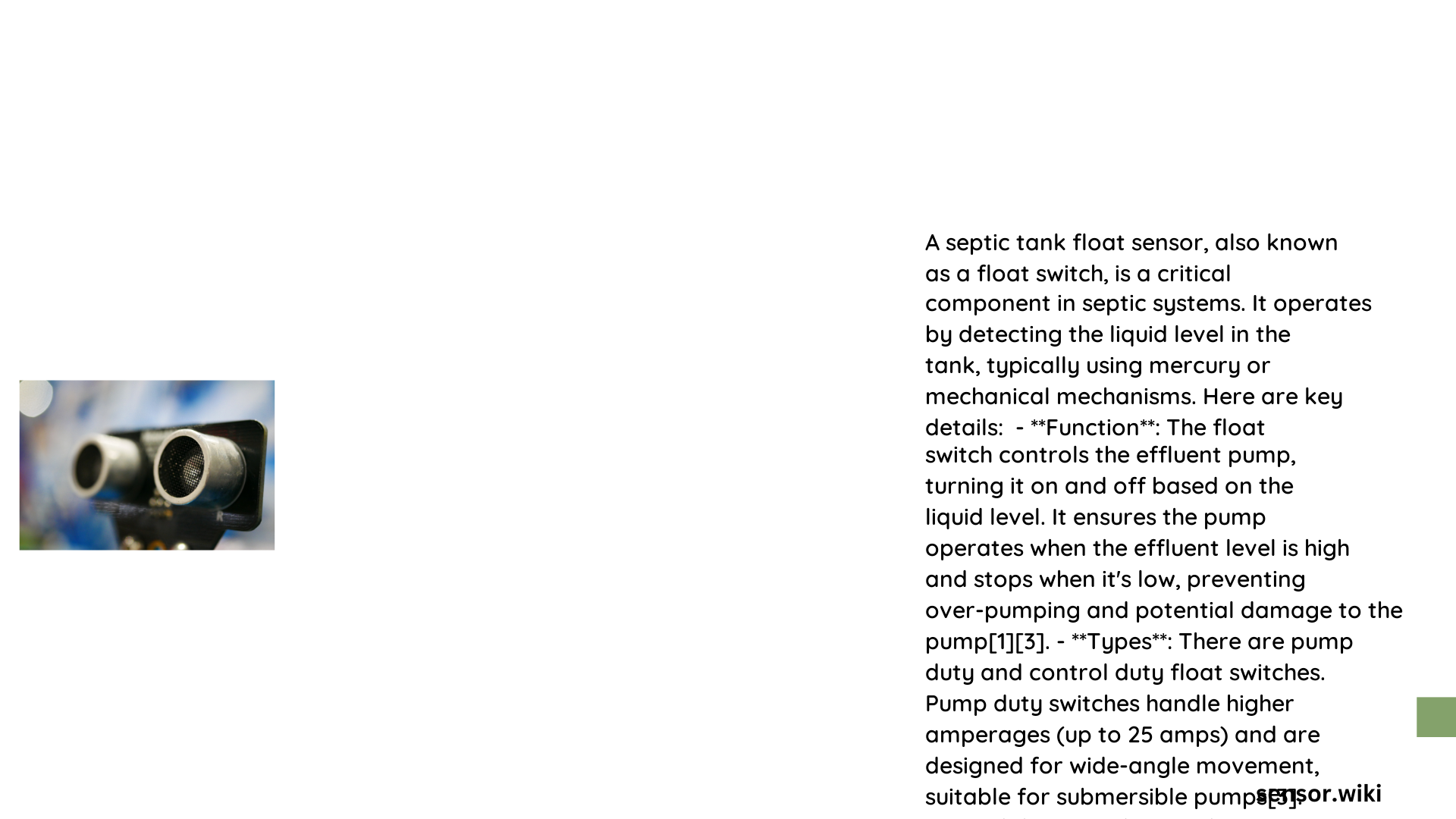A septic tank float sensor is a critical monitoring device designed to detect liquid levels within septic systems, automatically triggering pumps or alarms to prevent overflow and maintain optimal wastewater management. These sophisticated sensors provide real-time monitoring, ensuring system efficiency and preventing potential environmental hazards through precise liquid level detection and automated control mechanisms.
What Are Septic Tank Float Sensors?
Septic tank float sensors are specialized electronic devices that monitor liquid levels inside septic tanks, providing crucial information about system status and potential issues. These sensors use various technologies to detect and communicate precise tank levels, enabling homeowners and maintenance professionals to prevent potential overflow scenarios.
How Do Septic Tank Float Sensors Work?
Float sensors operate through multiple mechanisms:
- Mechanical Activation
- Uses a buoyant float that rises and falls with liquid levels
- Triggers electrical switches when specific height thresholds are reached
-
Provides direct, mechanical control of pump systems
-
Electronic Sensing
- Utilizes advanced sensor technologies
- Measures liquid levels through capacitive or ultrasonic methods
- Offers more precise and reliable measurements
What Types of Septic Tank Float Sensors Exist?
| Sensor Type | Operational Characteristics | Typical Applications |
|---|---|---|
| Mechanical Float Switch | Simple, cost-effective | Standard residential systems |
| Capacitive Sensor | High accuracy, minimal moving parts | Complex industrial applications |
| Ultrasonic Sensor | Non-contact measurement | Large commercial septic systems |
What Are the Key Performance Specifications?

Voltage and Power Requirements
Septic tank float sensors typically operate within specific electrical parameters:
– Standard voltage ranges: 12V DC to 230V AC
– Power consumption: Low-wattage designs
– Robust electrical insulation for harsh environments
Material and Durability Considerations
Critical material characteristics include:
– Corrosion-resistant polymers
– UV-stable construction
– Chemical-resistant compounds
– Temperature tolerance between -20°C to 80°C
How to Install Septic Tank Float Sensors?
Recommended Installation Steps
- Assess Tank Dimensions
- Measure tank depth
- Determine optimal sensor placement
-
Consider existing plumbing configuration
-
Prepare Mounting Location
- Clean installation area
- Ensure proper electrical connections
-
Verify sensor compatibility with existing systems
-
Calibrate Sensor Levels
- Set precise activation points
- Test electrical connections
- Validate sensor responsiveness
What Maintenance Practices Ensure Longevity?
Regular Inspection Protocols
- Quarterly visual inspections
- Annual electrical connection testing
- Clean sensor surfaces periodically
- Replace sensors every 5-7 years
What Potential Issues Can Arise?
Common Troubleshooting Scenarios
- Electrical connection failures
- Mechanical float mechanism jamming
- Corrosion-induced sensor degradation
- Inaccurate level measurements
Cost and Investment Considerations
Pricing Breakdown
- Basic mechanical float switches: $50-$150
- Advanced electronic sensors: $200-$500
- Professional installation: $100-$300
Conclusion
Septic tank float sensors represent a critical technology in modern wastewater management, offering precise monitoring and automated control for residential and commercial systems.
Expert Recommendations
- Choose sensors matching specific system requirements
- Prioritize quality over cost
- Invest in professional installation
- Maintain regular inspection schedules
Reference:
– EPA Septic Systems Guidelines
– Wastewater Management Association
– Plumbing & Drainage Institute
